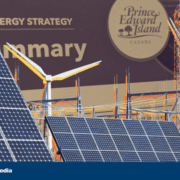ENGLEWOOD, Colo. – The ongoing trade dispute between China and the United States continues to affect the manufacture of polysilicon used for solar-photovoltaic (PV) modules in both countries, but not equally. A rush to install projects in China before the deadline for feed in tariff (FIT) levels of those projects on June 30, 2016 is the primary reason polysilicon prices are increasing, according to IHS Inc. (NYSE: IHS), the leading global source of critical information and insight.
In fact, before the Chinese New Year in February 2016, polysilicon sold for just $12 per kilogram, on average; however, prices are now expected to rise to $19 per kilogram by April 2016.
“Strong demand for polysilicon prices is triggered by the FIT deadline in China,” said Karl Melkonyan, solar supply-chain analyst for IHS Technology. “Buyers cannot wait any longer to buy polysilicon for solar modules, if they want to them produced and installed before the end of June. It is highly unlikely that polysilicon prices will continue increasing in the second half of the year, but a flat pricing outlook is certainly a possibility, if demand remains as high as previously forecast.”
U.S. polysilicon manufacturers have essentially lost access to China, which is the largest photovoltaic (PV) module-manufacturing base. This situation is causing severe financial distress for many U.S.-based companies, which cannot benefit from the strong polysilicon demand and recent price increase in China. Meanwhile, suppliers in Korea and other Asian countries have greatly benefited from their ability to increase market share in China and other markets. In fact, Korean polysilicon players now account for almost half of all imported polysilicon in China.
“Western manufacturers can no longer sell into China, which is leading to inventory over-supply and even causing some factories to close,” said Jessica Jin, solar supply chain analyst for IHS Technology. “Although they are trying to sell polysilicon at bargain prices, there is low demand for purchasing silicon outside of China, because most wafer factories are located in China.”
Consolidation continues within the global polysilicon industry according to IHS supply-chain analysts. Some important manufacturers have reduced their business scale and only a few players have announced capacity expansion plans in 2016. “Polysilicon inventories have reached critical levels, which is placing many U.S.-based polysilicon companies at risk; however, due to increased demand in China, OCI, Hanwha Chemical and other Korean suppliers have been able to reduce their inventory levels significantly,” Jin said.
The IHS PV Integrated Market Tracker focuses on the markets for polysilicon, solar wafers, PV cells and modules, and PV installations. It delivers independent analysis, accurate market data and forecasts. For information about purchasing this report, contact the sales department at IHS in the Americas at +1 844 301 7334 or [email protected]; in Europe, Middle East and Africa (EMEA) at +44 1344 328 300 or [email protected]; or Asia-Pacific (APAC) at +604 291 3600 or [email protected].
About IHS
IHS (NYSE: IHS) is the leading source of insight, analytics and expertise in critical areas that shape today’s business landscape. Businesses and governments in more than 140 countries around the globe rely on the comprehensive content, expert independent analysis and flexible delivery methods of IHS to make high-impact decisions and develop strategies with speed and confidence. IHS has been in business since 1959 and became a publicly traded company on the New York Stock Exchange in 2005. Headquartered in Englewood, Colorado, USA, IHS is committed to sustainable, profitable growth and employs nearly 9,000 people in 33 countries around the world.















Comments